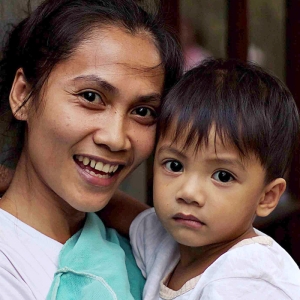Social Work Around the World: Combating Human Trafficking in the Philippines
January 08, 2018- Practice
USC’s Global Immersion Program gives insight into the state of sex tourism and human trafficking in the Philippines.
Thanks to relaxed trade agreements and a globalized economy, poverty, patriarchy and other root causes, human trafficking — essentially modern-day slavery — is the fastest-growing enterprise in the world. Having spread to more than 100 countries worldwide, this phenomenon is especially prevalent in countries such as the Philippines, where migrant labor is plentiful and regulations protecting workers are limited.
Annalisa Enrile, a clinical associate professor at the USC Suzanne Dworak-Peck School of Social Work, leads a student immersion program in the Philippines, where Master of Social Work students study human trafficking and modern-day slavery to gain an understanding of the social change strategies employed by nonprofits, government agencies and the private sector. Students then participate in a sprint where they create anti-trafficking innovations, which they present at the end of the immersion.
USC Suzanne Dworak-Peck School of Social Work: In broad strokes, could you discuss how globalization has contributed to the rise of human trafficking?
Annalisa Enrile: Globalization — or the integrated global economy that is driven by free trade, free flow of capital, and the exploitation of cheaper labor markets to provide goods and services — has exacerbated human trafficking and modern-day slavery.
In our immersion program, we focus on the Philippines in part because the country’s biggest export is the labor of women. Thousands of Filipino workers — women especially — go abroad every year to work in more than 100 countries around the world. Their presence has driven down the cost of labor, but workers’ rights have not been protected.
USC: Is this situation unique to the Philippines?
AE: The issue of workers’ rights affects many countries, but the Philippines is notorious for its lack of labor protections and for internal corruption. Working women have experienced horrific experiences at home and abroad.
In the Philippines, globalization came at the right time to create a perfect storm of trafficking. The US left its last occupied military base in 1986, leaving an economic void that “red light districts” quickly filled. Tourism, including sex tourism, is now the predominant economic driver of the Philippines economy, and trafficking is a way to meet that demand.
USC: The immersion program employs a comparative approach — examining social action and social change strategies as they relate to human trafficking in the United States versus the Philippines. Could you discuss some of these differences?
AE: There is an active grassroots movement and especially vibrant feminist movement in the Philippines. In the U.S., we talk about the civil rights movement and protest in a very conceptual way, but in the Philippines, activists regularly take to the streets, advocate in the halls of government and engage in social entrepreneurship.
Another differentiating factor lies with the nuances of Filipino politics. If they have enough votes, groups of people can come together and get direct representation in Congress. These representatives speak for a group of people as opposed to a region, and women have capitalized on this opportunity to get their voices heard.
USC: How has the immersion program evolved over time?
AE: We’ve been running the program since 2006. Our challenge in the beginning was working to raise awareness of trafficking as an independent issue — it’s usually lumped in with prostitution, child abuse or labor. The truth is, it’s a full-fledged epidemic on its own, and thankfully the mainstream community now understands that this is the case.
Once people recognize this for the issue that it is, we start looking for solutions. The students who participated in the program conceived of some fantastic projects in partnership with nonprofit organizations and foundations, ranging from media campaigns to the use of narrative therapy. We’ve done great work on trafficking in the last 10 years with those partners, but we’re uncovering problems that are more and more complex. The amount of trafficking happening has not been significantly reduced, meaning that we need to explore other solutions.
In the last several years, we’ve shifted to a design and innovation model. Immersion participants do a seven-day “sprint,” where they work through a concept to stop trafficking and take it all the way to prototype form. During the final days of the program, students pitch their ideas to foundations, investors and the media, with the goal of getting the projects off the ground.
To reference the work of our faculty online, we ask that you directly quote their work where possible and attribute it to "FACULTY NAME, a professor in the USC Suzanne Dworak-Peck School of Social Work” (LINK: https://dworakpeck.usc.edu)
